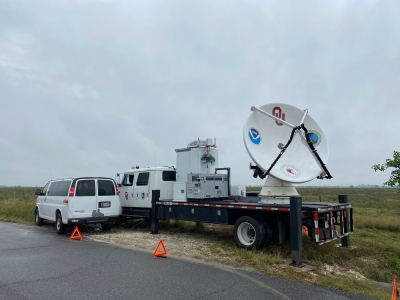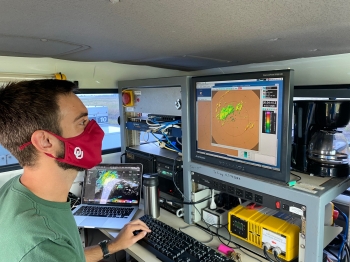Earlier today, the NOAA National Hurricane Center upgraded the storm gaining momentum off the United States Gulf Coast from a tropical storm to a hurricane, with sustained winds of more than 74 miles per hour.
A research team led by Michael Biggerstaff, professor of meteorology in the College of Atmospheric and Geographic Sciences at the University of Oklahoma, is en route to Louisiana to deploy two of the university’s truck-mounted Shared Mobile Atmospheric Research and Teaching (SMART) weather radars.
“The goal is to capture the vertical profile, duration, and gustiness of extreme winds in an effort to improve building codes to mitigate damage to homes and commercial buildings,” Biggerstaff said of the project, which is funded by the National Institute for Standards and Technology.
Besides the mobile radars, the team will deploy several instruments to capture atmospheric conditions. Disdrometers will be used to measure the sizes of the raindrops to improve radar estimations of rainfall and inland flooding. In addition, researchers will use an instrument-laden vehicle that includes tools for launching weather balloons to document the wind profile, which aids in creating maps of the maximum winds observed in the storm.



